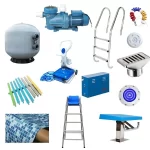
# Particle Counter: A Comprehensive Guide to Air Quality Monitoring
## Introduction to Particle Counters
Particle counters are essential tools for monitoring air quality in various environments. These devices measure the concentration and size distribution of particles in the air, providing valuable data for assessing indoor and outdoor air quality. Whether you’re concerned about workplace safety, environmental monitoring, or personal health, understanding how particle counters work and their applications is crucial.
## How Particle Counters Work
Particle counters operate by drawing in air samples and analyzing the particles within them. The most common types of particle counters use light scattering technology to detect and count particles. Here’s a brief overview of the process:
– Air is drawn into the device through an inlet.
– Particles pass through a laser beam or light source.
– Scattered light is detected by a sensor.
– The device calculates particle size and concentration based on the light scattering pattern.
## Types of Particle Counters
There are several types of particle counters available, each suited for different applications:
– Portable Particle Counters: Ideal for on-the-go measurements and spot checks.
– Handheld Particle Counters: Compact and easy to use for quick assessments.
– Desktop Particle Counters: Suitable for continuous monitoring in controlled environments.
– Remote Particle Counters: Used for long-term monitoring in hard-to-reach areas.
## Applications of Particle Counters
Particle counters are used in a wide range of industries and settings:
– Healthcare: Monitoring air quality in hospitals and cleanrooms to prevent infections.
– Manufacturing: Ensuring clean environments for sensitive production processes.
– Environmental Science: Studying air pollution and its impact on ecosystems.
– Indoor Air Quality: Assessing and improving air quality in homes and offices.
## Choosing the Right Particle Counter
When selecting a particle counter, consider the following factors:
– Measurement Range: Ensure the device can detect the particle sizes relevant to your application.
– Accuracy and Precision: Look for devices with high accuracy and repeatability.
– Portability: Choose a device that fits your mobility needs.
– Data Logging: Consider whether you need data storage and analysis capabilities.
– Calibration: Check if the device requires frequent calibration and if it’s easy to perform.
## Maintenance and Calibration
Regular maintenance and calibration are essential for ensuring accurate and reliable measurements. Follow these tips:
– Clean the device regularly to prevent contamination.
– Replace filters and sensors as recommended by the manufacturer.
– Calibrate the device according to the manufacturer’s guidelines.
– Keep a log of maintenance activities for reference.
## Conclusion
Particle counters are invaluable tools for monitoring and improving air quality. By understanding how they work, the different types available, and their applications, you can make informed decisions about which device is best for your needs. Regular maintenance and calibration will ensure your particle counter continues to provide accurate and reliable data, helping you maintain a healthy and safe environment.
Whether you’re a professional in the field or simply concerned about the air you breathe, investing in a quality particle counter is a step towards better air quality and overall well-being.
Keyword: particle counter


